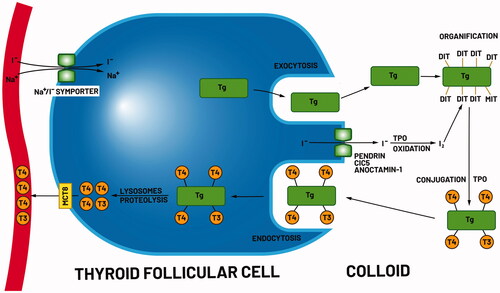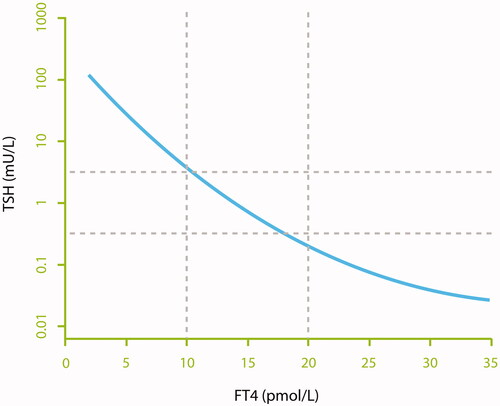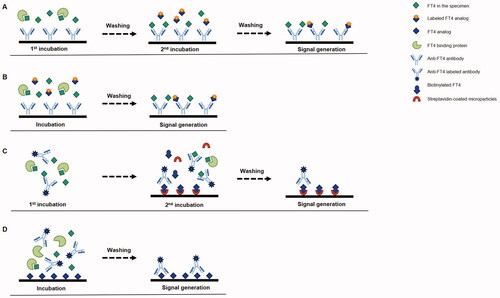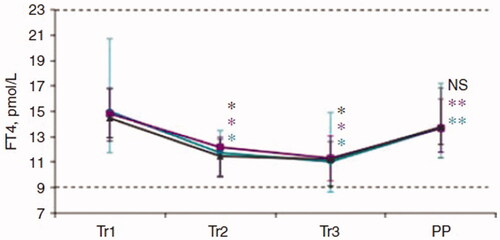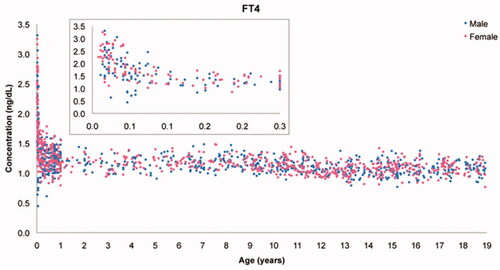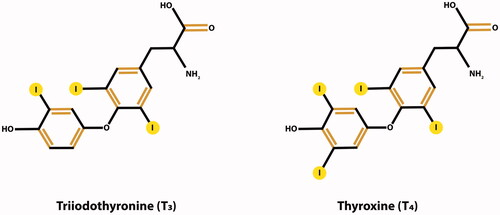Figures & data
Table 1. Clinical indications for FT4 measurement.
Table 2. Main analytical characteristics of the most used FT4 immunoassays as quoted by the manufacturers.
Table 3. Comparison of RIs of FT4 in adult populations on Abbott ARCHITECT platform.
Table 4. Comparison of RIs of FT4 in adult populations on Beckman Coulter platforms.
Table 5. Comparison of reference intervals of FT4 in adult populations on Roche Diagnostics platforms.
Table 6. Comparison of reference intervals of FT4 in adult populations on the Siemens ADVIA Centaur platform.
Table 7. Comparison of RIs of FT4 in elderly populations using different analytical platforms.
Table 8. Comparison of gestational RIs of FT4 using different platforms, in studies published from January 2012 to May 2022 including at least two different trimesters of pregnancy.
Table 9. Comparison of RIs of FT4 for children aged 1–18 years using different platforms, in studies published from January 2012 to May 2022.
Table 10. Comparison of RIs of FT4 for infants aged 0–12 months using different platforms, in studies published from January 2012 to May 2022.
